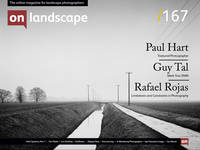How to hack your brain to become a better landscape photographer
But it sometimes happens that I cannot easily shake off the village. The thought of some work will run in my head and I am not where my body is—I am out of my senses. In my walks I would fain return to my senses. What business have I in the woods, if I am thinking of something out of the woods? ~Henry David Thoreau
The practice of mindfulness meditation (indeed, even the very words) suffers from what some practitioners and scientists describe as, “a PR problem.” Some perceive (and consequently dismiss) meditation as a New Age fad, as westernised romanticised versions of mystical eastern rituals, or as a means to contrived “spirituality.” All are true in some cases. However, the scientific study of the effects of meditation is in fact a thriving area of research whose empirical conclusions are profoundly useful. Among the general (proven) benefits of mindfulness meditation, some are of particular interest to those pursuing creative work.
A bit of good news: the benefits of meditation can be had without ever sitting in the lotus position, without chanting mantras, and without seeking a path to enlightenment and freedom from the cycle of karma. In fact, you don’t even need to know what any of these things mean to benefit from meditation. To those sceptics not prone to fall for the hype, and who demand (paraphrasing Carl Sagan) extraordinary proof for extraordinary claims—rest assured, I am one of you. You’ve probably heard the hype. Allow me to fill in the science.



